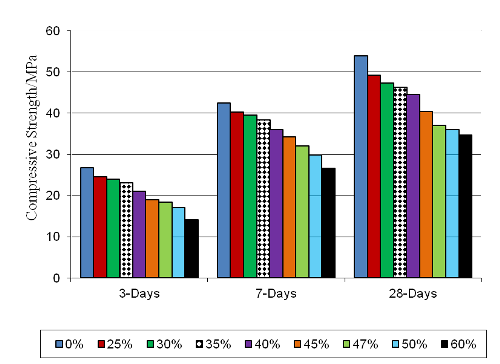
Cementing material from rice husk-broken bricks-spent bleaching earth-dried calcium carbide residue
Abstract
Full Text:
PDFReferences
Jaturapitakkul C, Roongreung B. Cementing Material from Calcium Carbide Residue - Rice Husks Ash. Journal of Materials in Civil Engineering 2003;15:470-75.
John JM. Inorganic Chemicals Handbook. New York: Marcle Dekker; 1993.
Muthakia GK, wa-Thiong’o JK, Muthengia JW. Cementing Material from Acetylene Lime Sludge-Broken Bricks. East African Journal of Physical Sciences 2005;6(1):13-19.
Habert G, Choupay N, Montel JM, Guillaume D, Escadeillas G. Effects of the Secondary Minerals of the Natural Pozzolans on their Pozzolanic Activity. Cement and Concrete Research, 2008, 38(7), 963 - 975.
Fernandez R, Martirena F, Scrivener KL.. The Origin of the Pozzolanic Activity of Calcined Clay Minerals: A Comparison Between Kaolinite, Illite and Montmorillonite. Cement and Concrete Research 2011; 41(1), 113 - 122.
Muthengia JW. Low Cost Pozzolana Based Cement from Industrial and Agricultural Waste Materials, Nairobi: Kenyatta University; 2003.
Muthengia JW, wa-Thiong'o JK, Muthakia GK. Spent Bleaching Earth as a Pozzolanic Material. Journal of Civil Engineering Research and Practice 2005;2(1):15-21.
Chopra SK. Utilisation of Rice Husk For Making Cement and Cement Like Binders. Paper presented at: Rice Husk Ash Proceed. UNIDO/ESACAP/RCTT/PCSIR Joint Workshop, 1979; Peshawar.
Tuan VN, Van Breugel G, Copuroglu O. Hydration and Microstructure of Ultra High Performance Concrete Incorporating Rice Husk Ash. Cement and Concrete Research 2011; 41(11), 1104 - 1111.
Nair DG, Fraaij A, Klaassen AA K, Kentgens APM. A Structural Investigation Relating to the Pozzolanic Activity of Rice Husk Ashes. Cement and Concrete Research 2008, 38(6), 861 - 869.
ASTM. Standard Specification for Fly Ash and Other Pozzolanas for Use with Lime, No. 593, Part C: American Society for Testing and Materials, 1991.
Kenya Bureau of Standards. Kenya Standard Specification for Portland Pozzolana Cements; KS 02 1263. Nairobi; 1993.
Taylor HFW. Cement Chemistry. London: Taylor and Thomas Telford Services LTD; 1997.
Ampadu KO, Torii K. Chloride Ingress and Steel Corrosion in Cement Mortars Incorporating Low-Quality Fly Ashes. Cement and Concrete Research 2002;32(6):893-901.
Bonakdar A, Mobasher B, Chawla N. Diffusivity and Micro-Hardness of Blended Cement Materials Exposed to External Sulfate Attack. Cement and Concrete Composites 2012, 34(1), 76 - 85.
Taylor HFW. Discussion, Sulfate Attack Mechanisms. Materials Science of Concrete Special Volume American Ceramic Society, 1999;Special Volume:33-34.
Diamond S. Long-Term Status of Calcium Hydroxide Saturation of Pore Solutions in Hardened Cements. Cement and Concrete Research 1975;5(6):607-16.
Diamond S. Effects of two Danish Flyashes on Alkali Contents of Pore Solutions of Cement-Flyash Pastes. Cement and Concrete Research 1981;11(3):383 - 194.
Byfors K. Influence of Silica Fume and Flyash on Chloride Diffusion and pH Values in Cement Paste. Cement and Concrete Research 1987;17(1):115 - 30.
Arya C, Buenfeld NR, Newman JB. Factors Influencing Chloride-Binding in Concrete. Cement and Concrete Research 1990;20(2):291-300.
Sagoe-Crenstsil KK, Glasser FP. ''Green Rust'', Iron Solubility and the Role of Chloride in the Corrosion of Steel at High pH. Cement and Concrete Research 1993;23(4):785-91.
International Standard for Organisation (ISO). Cement-Test-Methods-Pozzolanicity Test for Pozzolanic Cements, ISO 863: 1990 (E). Switzerland; 1990.
DOI: http://dx.doi.org/10.13171/mjc.2.2.2012.02.10.20
Refbacks
- There are currently no refbacks.
Copyright (c) 2015 Mediterranean Journal of Chemistry
